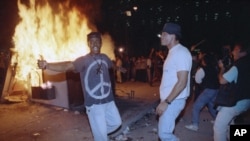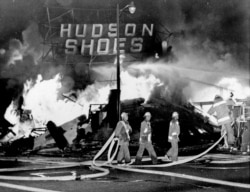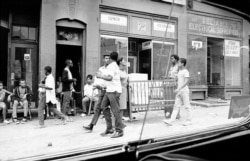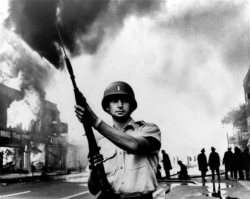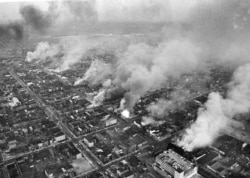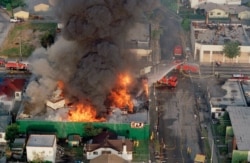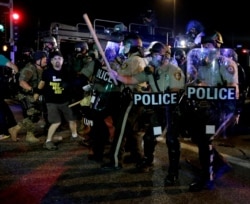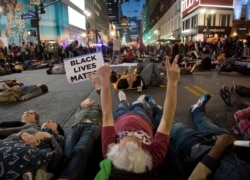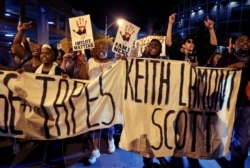The rioting in the U.S. city of Minneapolis after the death of a black man in police custody is just the latest incident of racially charged mayhem to mark the United States since the 1960s.
1965: Los Angeles
An identity check by police on two black men in a car sparks the Watts riots, August 11-17, 1965, in Los Angeles, which leave 34 dead and tens of millions of dollars' worth of damage.
The trouble starts when Marquette Frye and his half brother are stopped by police and taken in for questioning. Several thousand blacks surround the police station and, after a week of arson and looting, the Watts neighborhood is all but destroyed.
1967: Newark
Two white police officers arrest and beat up a black taxi driver for a minor traffic violation, setting off rioting July 12-17 in Newark, New Jersey. For five days, in stifling summer heat, rioters wreck the district, leaving 26 dead and 1,500 injured.
1967: Detroit
Race riots in Detroit, Michigan, July 23-27, 1967, kill 43 and leave more than 2,000 injured. Trouble spreads to Illinois, North Carolina, Tennessee and Maryland.
1968: King assassination
After the assassination of Martin Luther King Jr. in Memphis, Tennessee, violence erupts in 125 cities April 4-11, 1968, leaving at least 46 dead and 2,600 injured. In Washington, then-President Lyndon B. Johnson sends in the 82nd Airborne Division to quell riots.
1980: Miami
The acquittal of four white police officers in Tampa, Florida, on charges of beating a black motorcyclist to death in December 1979 after he rode through a red light sets off a wave of violence in Miami's Liberty City, May 17-20, 1980, leaving 18 dead and more than 300 injured.
1992: Los Angeles
From April 30 to May 1, 1992, riots erupt in Los Angeles, with a toll of at least 59 dead and more than 2,300 injured. The violence was set off by the acquittal of four white police officers who were filmed beating up a black motorist, Rodney King. Violence also breaks out in Atlanta, California, Las Vegas, New York, San Francisco and San Jose.
2001: Cincinnati
On April 9, 2001, rioting erupts in Cincinnati, Ohio, after the killing of a 19-year-old black man, Timothy Thomas, by a white police officer.
Mayor Charlie Luken lifts a four-night curfew on the city on April 16, after the city's worst rioting in more than 30 years, during which 70 people are injured.
2014: Ferguson
Ten days of protests and riots and heavy-handed police tactics in Ferguson, Missouri, take place August 9-19, 2014, after a white officer kills an unarmed black teenager, Michael Brown. In late November, the announcement that charges are being dropped against the police officer leads to a new explosion of anger.
2015: Baltimore
On April 19, 2015, Freddie Gray, a 25-year-old black man, dies a week after suffering serious spinal injuries in a police van after being arrested by Baltimore officers.
The arrest is captured on video and broadcast, leading to rioting and looting in Baltimore, a city of 620,000 inhabitants, of which nearly two-thirds are black. A state of emergency is declared and the authorities call in troops.
2016: Charlotte
In September 2016, in Charlotte, North Carolina, sometimes violent protests break out over the fatal police shooting of Keith Lamont Scott, 43.
Police say the shooting happened when they saw him hold up a gun as they approached his vehicle after seeing him rolling a marijuana cigarette. His family says he was unarmed.
The authorities impose a curfew and call in troops.




